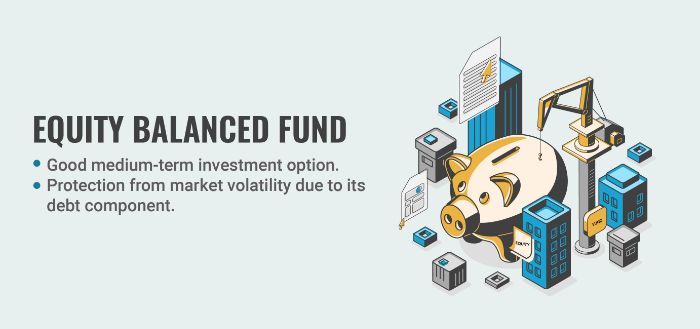
What is a Balanced Fund?
Balanced funds are one of the simplest ways to diversify your portfolio. These mutual funds automatically distribute your money across different stocks and bonds, decreasing volatility.
Balanced funds typically target an allocation of 60% stock and 40% bond investments. However, that static asset allocation may not be suitable for you depending on your needs and investment horizon.
Stocks
A balanced fund, also referred to as an asset allocation fund, is a hybrid investment option that spreads money among stocks and bonds. These funds are commonly utilized by retirees who desire both income and capital growth from their investments.
Balanced funds typically contain more stock assets than bond ones, as stocks offer the potential for greater capital appreciation and can offer higher yields.
Bonds and stocks both carry distinct risks. For instance, stocks could potentially decrease in value due to economic or market conditions.
Bonds tend to be less risky than stocks, since they represent ownership in a company and bear all of the consequences of bankruptcy.
Balanced funds differ from life-cycle, target-date or actively managed asset-allocation funds in that they adjust their holdings to reduce risk as an investor approaches retirement age.
Bonds
A balanced fund provides an easy way to diversify your investment portfolio. These funds invest in both stocks and bonds, can be index funds that attempt to replicate a particular stock market index or actively managed funds managed by professional investors.
A common strategy for a balanced fund is to adopt a 60/40 asset allocation, in which 60% of the fund’s assets are invested in stocks and 40% in bonds. This mix can provide portfolio stability and minimize the risk of sudden shifts toward stock-only investments during bear markets.
However, the amount of bond component in a balanced fund should be decided according to your risk tolerance and investment time horizon. Knowing these factors makes selecting a bond fund much simpler, and using Schwab Mutual Fund OneSource Select List(r) further simplifies this process.
A balanced fund’s bond component provides income. This can come in the form of dividend payments from large-company stocks or interest generated by investment-grade corporate and government bonds. Furthermore, bonds act as a buffer against stock market volatility, especially during times of low volatility.
Income
Balanced funds invest in a mix of equity and bond securities that includes dividend-paying stocks, interest-paying bonds, and convertibles (bonds that can be converted to stock at an agreed upon price). The income generated from these investments is used to cover part of the fund’s expenses.
Balanced funds typically invest between 50-60% of their assets in equity securities, helping to diversify an investor’s portfolio and reduce volatility.
Funds also offer the flexibility to adjust their equity and fixed income allocations according to changing market conditions. For instance, during an upswing, the fund might increase its equity holdings and decrease its bond concentration in order to maximize gains.
However, tax implications associated with owning balanced funds can be a concern. For instance, capital gains distributions from these investments are subject to regular federal taxes – this could negatively affect an investor’s tax strategy if their investment isn’t in a tax-favored retirement account.
Taxes
A balanced fund is an investment vehicle that holds both stocks and bonds. This combination of asset classes can offer stability in volatile markets, making it a beneficial way to diversify your portfolio.
Some funds are tax-managed to minimize taxable distributions such as dividend income and capital gains. This can be accomplished by selecting companies that don’t pay taxable dividends and selling shares throughout the year rather than just at year-end.
It’s especially crucial in retirement when you may draw down on your 401(k) or other retirement accounts and don’t want a surprise tax bill.
Taxes should always be taken into account when investing in a balanced fund, since they can significantly affect how much you make or lose depending on how long your shares remain invested. A straightforward way to estimate how this might impact your total cost is illustrated in Table 2.
